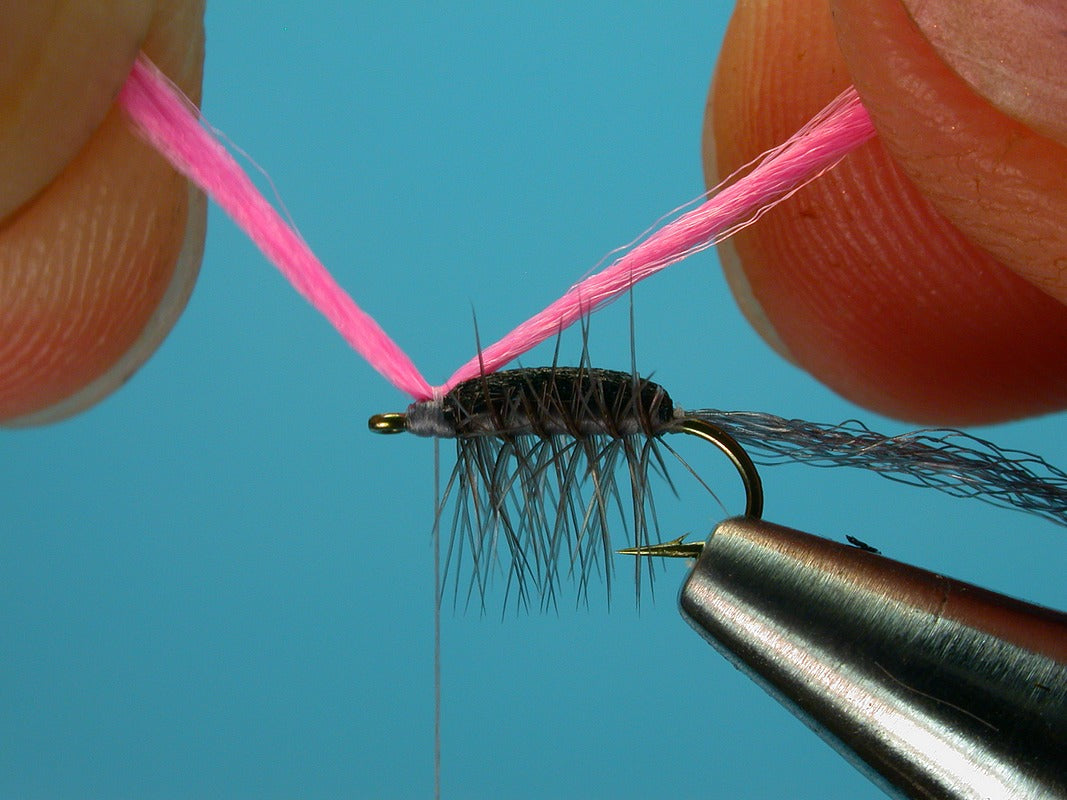Eric’s Midge belongs the illustrious Eric Pettine. For those of you that don’t know Eric, he really is The Most Interesting Man in the World. Eric has fished and hunted all over and has a pile of great stories to tell. His little dry midge pattern featured here is his answer to a high viz pattern to help those of you that have trouble seeing the fly. This is a simple tie and works quite well so you ought to tie a few up and stash them in your box. Eric’s addition of a foam shellback and trailing shuck add flotation and realism to this pattern.
Materials Needed:
Hook: TMC 101 #18-26
Thread: UNI Gray 8/0
Shuck: Gray Antron or Z-Lon
Shellback: 1mm Black Razor Foam, cut to hook gap width
Hackle: Blue Dun Hackle, slightly undersized
Hot Spot: Hot Pink or Orange McFlylon or Antron
Step 1
Start the thread a couple eye lengths back from the hook eye and tie in a sparse (about 1/5th of a strand) clump of gray Antron or Z-lon.

Step 2
Hold the antron tight and wrap the thread smoothly back over it to the bend of the hook, making sure it stays on the top of the shank.

Step 3
Cut a strip of 1 mm black Razor Foam that is about as wide as the hook gap.

Step 4
Tie the foam strip in at the bend of the hook with a few tight turns of thread.

Step 5
Strip the butt of a slightly undersized blue dun hackle feather and tie it in at the bend of the hook. Make sure the inside of the feather is either facing the shank or facing down

Step 6
Bring the thread forward to an eye length or so behind the hook eye, forming a smooth thread body as you go. Palmer the hackle feather forward with about six turns to the front of the body, tie it off and clip the excess.

Step 7
Pull the foam strip forward over the top of the body and hackle and tie it down behind the hook eye. Trim the excess foam flush and wrap over its stub end.

Step 8
Tie a small clump of brightly colored antron or McFlylon in on top of the thread head with a narrow band of thread.

Step 9
Whip finish the thread and clip it. Cut the hi viz material a bit longer on the back and a bit shorter on the front, leaving plenty of material to see on the water.

